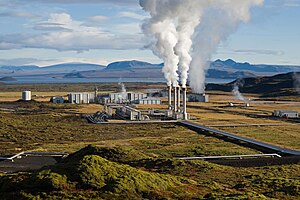New Worldwatch Institute report examines global consumption and installed capacity of hydropower and geothermal energy sources
Although the global consumption and installed capacity of hydropower and geothermal technologies have increased steadily since 2003, both types of energy saw slower growth in 2011, according to new research conducted by the Worldwatch Institute for its Vital Signs Online service (www.worldwatch.org).Global installed capacity of hydropower reached 970 gigawatts (GW), only a 1.6 percent increase from the previous year, while geothermal cumulative capacity reached 11.2 GW, slowing to below 1 percent for the first time since 2002, writes report author Evan Musolino.
“Despite the recent slowdown in growth, the overall market for hydropower and geothermal power is increasing in part because these two sources are not subject to the variability in generation that plagues other renewable energy sources such as wind and solar,” said Musolino, a research associate with the Worldwatch’s Climate and Energy Program. “The greater reliability of hydro and geothermal can thus be harnessed to provide reliable baseload power.”
Hydroelectricity accounted for almost 6 percent of primary energy consumption among members of the Organisation for Economic Co-operation and Development (OECD). It played a more important role in other countries—-at a little over 7 percent of usage—-and these non-OECD nations accounted for 60 percent of worldwide hydroelectricity consumption. On a regional basis, South America and Central America are most dependent on hydroelectricity relative to total energy use.
Although hydropower plays the least important role in the Middle East, the region experienced the greatest growth in hydroelectricity consumption in 2011, at almost 22 percent. North America was next, with an increase slightly under 14 percent. In contrast, usage fell by almost 9 percent in Europe and Eurasia and by 0.6 percent in the Asia Pacific region.
Although some 150 countries produce hydropower, half of the global capacity was concentrated in just five nations at the end of 2011. China remains the leader, with 212 GW installed, followed by Brazil (82.2 GW), the United States (79 GW), Canada (76.4 GW), and Russia (46 GW).
Despite the potential for inexpensive, low-emission electricity from hydropower, large projects can bring significant negative consequences. The damming of rivers to create the reservoirs needed for large-scale power generation is severely disruptive to ecosystems and can harm both animal and human populations. And building hydropower plants has its own significant emissions impacts, including from the creation of reservoirs and the large amounts of concrete needed for construction. In many cases, hydropower projects have led to the displacement of local populations and the adverse altering of downstream conditions.
But hydropower continues to be one of the most cost-effective renewable energy generation sources. Typical costs are in the range of 2-13 U.S. cents per kilowatt-hour for existing grid-connected hydropower plants and 5-10 cents per kilowatt-hour for new plants. Micro-hydropower installations (0.1 kilowatt to 1 megawatt), which are typically used in rural communities not connected to the national grid, generate at 5-40 cents per kilowatt-hour.
Like hydropower, geothermal resources are highly location-specific. Many countries with strong hydropower potential, including much of Latin America, the Caribbean, and Southeast Asia, have equally impressive geothermal potential. These resources have been exploited for power generation for over a century, with significant capacity being developed since the mid-1900s.
The costs associated with geothermal power also closely mirror those of hydropower. Varying by geothermal technology, generation costs are in the range of 5.7-10.7 cents per kilowatt-hour. High capital costs, associated primarily with the cost of drilling geothermal wells and the long lead time for project development, continue to challenge project developers.
 Alternative Energy HQ solar power for homes, wind energy, and bio fuel issues
Alternative Energy HQ solar power for homes, wind energy, and bio fuel issues



 Ethiopia looks to realise its geothermal energy potential
Ethiopia looks to realise its geothermal energy potential






